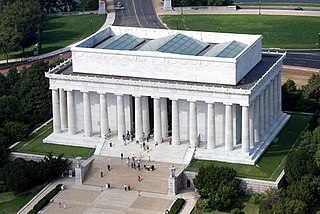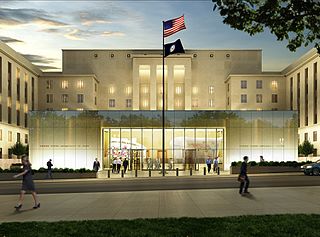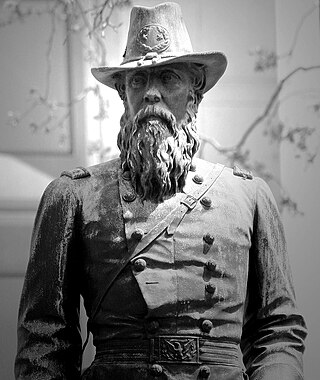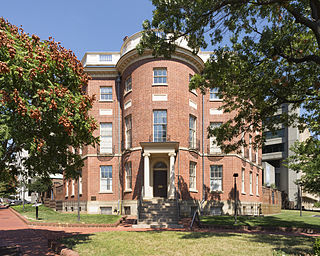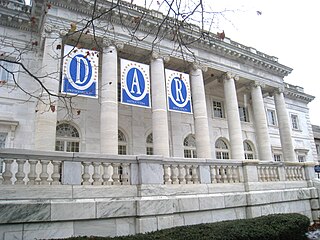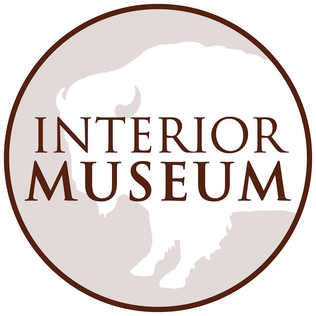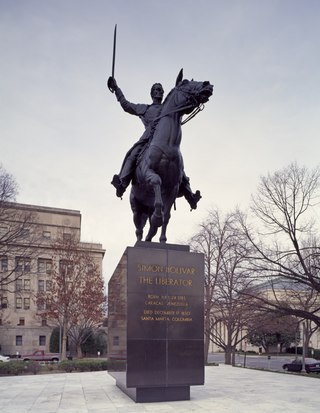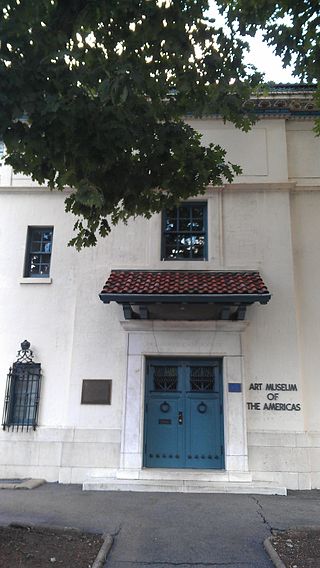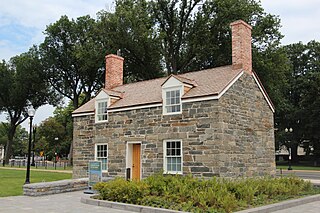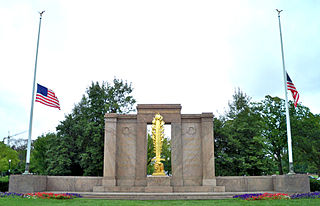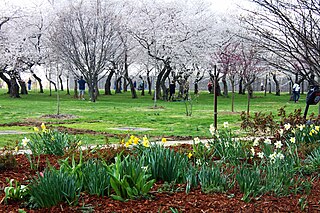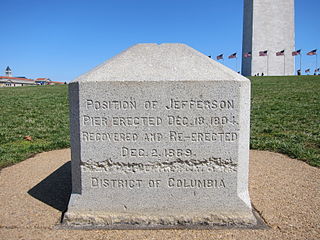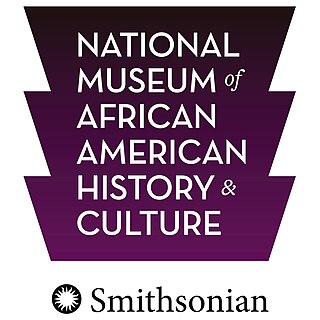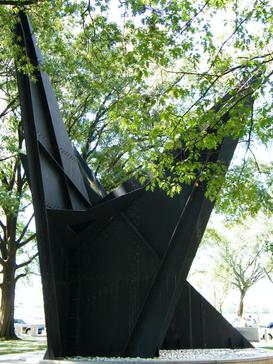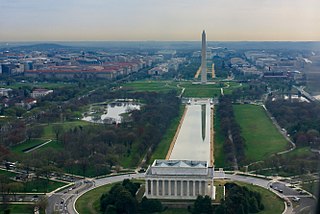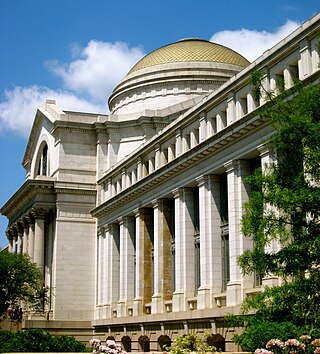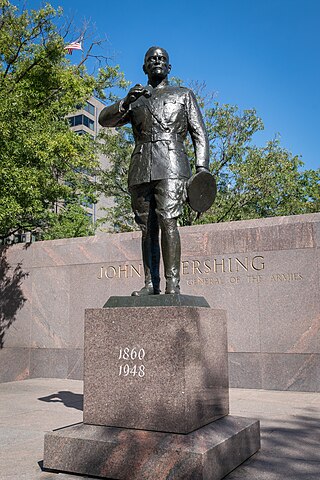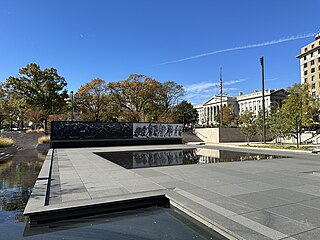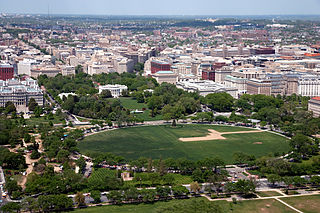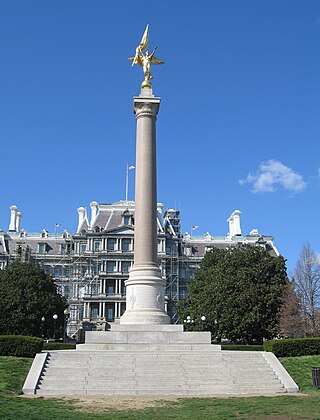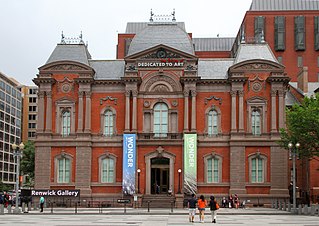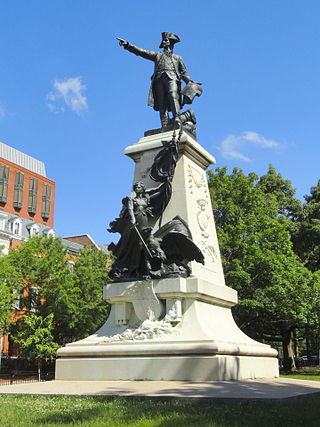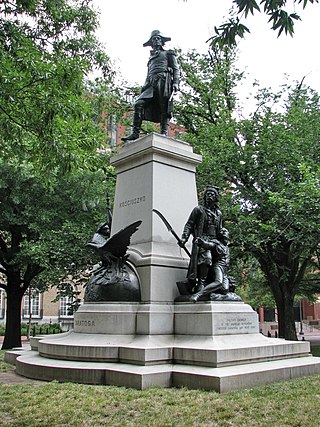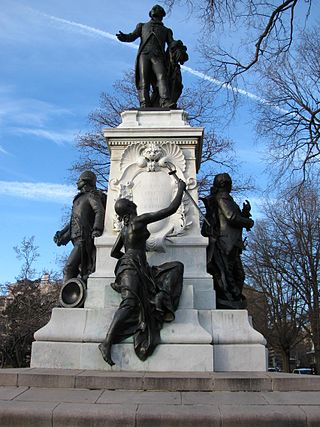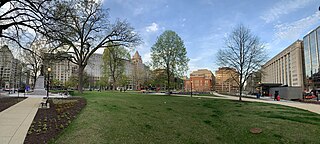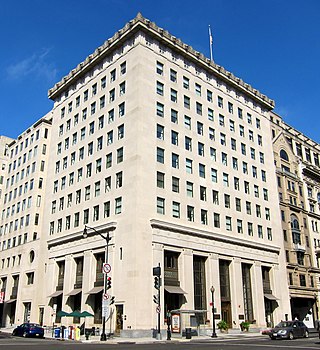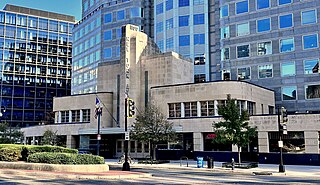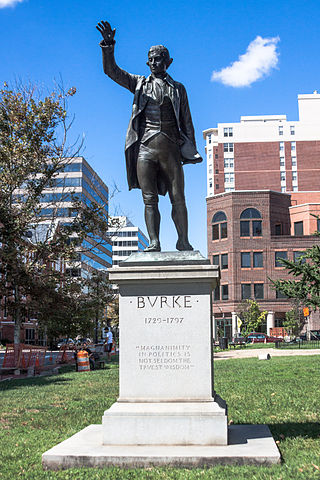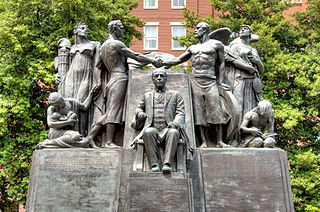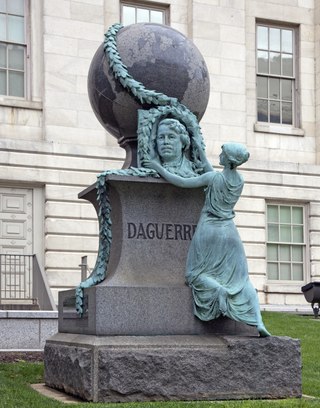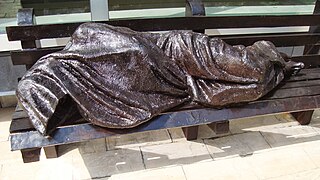Self-guided Sightseeing Tour #8 in Washington, United States
Legend
Tour Facts
14.3 km
423 m
Experience Washington in United States in a whole new way with our free self-guided sightseeing tour. This site not only offers you practical information and insider tips, but also a rich variety of activities and sights you shouldn't miss. Whether you love art and culture, want to explore historical sites or simply want to experience the vibrant atmosphere of a lively city - you'll find everything you need for your personal adventure here.
Individual Sights in WashingtonSight 1: Abraham Lincoln
Abraham Lincoln (1920) is a colossal seated figure of the 16th president of the United States, Abraham Lincoln (1809–1865), sculpted by Daniel Chester French (1850–1931) and carved by the Piccirilli Brothers. Located in the Lincoln Memorial on the National Mall in Washington, D.C., the statue was unveiled in 1922. The work follows in the Beaux Arts and American Renaissance style traditions.
Sight 2: Lincoln Memorial
The Lincoln Memorial is a U.S. national memorial that honors the 16th president of the United States, Abraham Lincoln. An example of neoclassicism, it is in the form of a classical temple and is located at the western end of the National Mall in Washington, D.C. Henry Bacon is the memorial's architect and Daniel Chester French designed the large interior statue of a seated Abraham Lincoln (1920), which was carved in marble by the Piccirilli brothers. Jules Guerin painted the interior murals, and the epitaph above the statue was written by Royal Cortissoz. Dedicated on May 30, 1922, it is one of several memorials built to honor an American president. It has been a major tourist attraction since its opening, and over the years, has occasionally been used as a symbolic center focused on race relations and civil rights.
Sight 3: The Three Soldiers
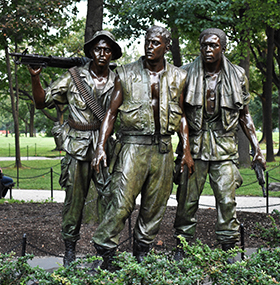
Three Soldiers is a bronze statue by Frederick Hart. Unveiled on Veterans Day, November 11, 1984, on the National Mall in Washington, D.C., it is part of the Vietnam Veterans Memorial commemorating the Vietnam War. It was the first representation of an African American on the National Mall.
Sight 4: Albert Einstein Memorial
The Albert Einstein Memorial is a monumental bronze statue by sculptor Robert Berks, depicting Albert Einstein seated with manuscript papers in hand. It is located in central Washington, D.C., United States, in a grove of trees at the southwest corner of the grounds of the National Academy of Sciences at 2101 Constitution Avenue N.W., near the Vietnam Veterans Memorial. Two replicas exist at the Israel Academy of Sciences and Humanities and the Georgia Institute of Technology.
Sight 5: National Museum of American Diplomacy
The National Museum of American Diplomacy (NMAD) is the first museum in the United States dedicated to telling the stories of American diplomacy. Its mission is to inspire discovery of how American diplomacy shapes the nation's prosperity and security.
Wikipedia: National Museum of American Diplomacy (EN), Website
Sight 6: Major General John A. Rawlins Statue
The statue of John Aaron Rawlins, a United States Army general who served during the Civil War and later as Secretary of War, is a focal point of Rawlins Park, a small public park in Washington, D.C.'s Foggy Bottom neighborhood. It was installed in 1874, but relocated several times between 1880 and 1931. The statue was sculpted by French-American artist Joseph A. Bailly, whose best known work is the statue of George Washington in front of Independence Hall in Philadelphia.
Sight 7: Octagon House
The Octagon House, also known as the Colonel John Tayloe III House, is a house located at 1799 New York Avenue, Northwest in the Foggy Bottom neighborhood of Washington, D.C. It was built in 1799 for John Tayloe III, the wealthiest planter in the country, at the behest of his new family member, George Washington. In September 1814, after British forces burnt the White House during the War of 1812, for six months the Octagon House served as the residence of United States president James Madison and first lady Dolley Madison. It is one of only five houses to serve as the presidential residence in the history of the United States of America, and one of only three, along with the White House and Blair House, that still stand.
Sight 8: Canova Lions
The Canova Lions, located in front of the Corcoran Gallery of Art in Washington, D.C., are copies of a pair of lions sculpted by Antonio Canova in 1792 for the tomb of Pope Clement XIII in St Peter's in Rome. The originals were sculpted from marble; these were cast in bronze from molds of the originals. The pieces were installed in 1860.
Sight 9: DAR Museum
The DAR Museum, run by the Daughters of the American Revolution, is an art and history museum in Washington, D.C. The museum is located in Memorial Continental Hall, just down the street from DAR Constitution Hall, where some of the museum's concerts take place.
Sight 10: DAR Constitution Hall
DAR Constitution Hall is a concert hall located at 1776 D Street NW, near the White House in Washington, D.C. It was built in 1929 by the Daughters of the American Revolution to house its annual convention when membership delegations outgrew Memorial Continental Hall. Later, the two buildings were connected by a third structure housing the DAR Museum, administrative offices, and genealogical library. DAR Constitution Hall is still owned and operated by the National Society of Daughters of the American Revolution. It was designated a National Historic Landmark in 1985. It has been a major cultural center of the city since its construction, and houses its largest auditorium.
Sight 11: Interior Museum
The Interior Museum is a museum operated by the United States Department of the Interior and housed at the department's headquarters at the Stewart Lee Udall Main Interior Building in Washington, D.C., on the first floor.
Sight 12: The Liberator Simon Bolivar Memorial
An equestrian statue of Venezuelan military and political leader Simón Bolívar by the American artist Felix de Weldon is located in Washington, D.C., at Virginia Avenue NW, 18th Street NW, and C Street NW, near the United States Department of Interior and the Pan American Union Building of the Organization of American States. It was surveyed as part of the Smithsonian Institution's Save Outdoor Sculpture! survey in 1993.
Sight 13: Art Museum of the Americas
Art Museum of the Americas (AMA), located in Washington, D.C., is the first art museum in the United States primarily devoted to exhibiting works of modern and contemporary art from Latin America and the Caribbean. The museum was formally established in 1976 by the Organization of American States (OAS) as the Museum of Modern Art of Latin America. Artists represented in the AMA's permanent collection include Carlos Cruz-Diez, Candido Portinari, Pedro Figari, Fernando de Szyszlo, Amelia Peláez, and Alejandro Obregón.
Sight 14: General Jose Gervasio Artigas Statue
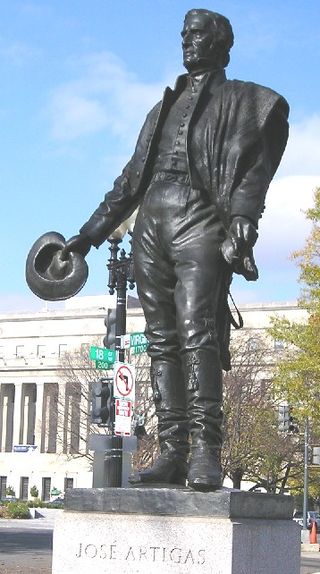
General Jose Gervasio Artigas is a bronze statue, in Washington, DC, capital of the United States, at the intersection of Constitution Avenue and Virginia Avenue, at 18th Street. It is one of a set called the Statues of the Liberators. José Artigas was a 19th-century general, sometimes called "the father of Uruguayan independence", "Protector de los Pueblos Libres" or "Jefe de los Orientales".
Sight 15: Lockkeeper's House
The Lockkeeper's House is the oldest building on the National Mall in Washington, D.C. It was built in 1837 at what is now the southwest corner of 17th Street, NW and Constitution Avenue, NW, near Constitution Gardens.
Sight 16: Second Infantry Division Memorial
The Second Division Memorial is located in President's Park, between 17th Street Northwest and Constitution Avenue in Washington, DC, United States.
Sight 17: German-American Friendship Garden
The German-American Friendship Garden on the National Mall in Washington, D.C. stands as a symbol of the positive and cooperative relations between the United States of America and the Federal Republic of Germany.
Sight 18: Jefferson Pier Stone
Jefferson Pier, Jefferson Stone, or the Jefferson Pier Stone, in Washington, D.C., marks the second prime meridian of the United States even though it was never officially recognized, either by presidential proclamation or by a resolution or act of Congress.
Sight 19: National Museum of African American History and Culture
The National Museum of African American History and Culture (NMAAHC), colloquially known as the Blacksonian, is a Smithsonian Institution museum located on the National Mall in Washington, D.C., in the United States. It was established in 2003 and opened its permanent home in 2016 with a ceremony led by President Barack Obama.
Wikipedia: National Museum of African American History and Culture (EN), Website
Sight 20: The Gwenfritz Sculpture
Gwenfritz is a painted steel abstract stabile, by Alexander Calder. It is located at the National Museum of American History, at 14th Street, and Constitution Avenue, in Washington, D.C.
Sight 21: National Museum of American History
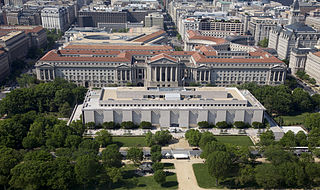
The National Museum of American History: Kenneth E. Behring Center is a historical museum in Washington, D.C. It collects, preserves, and displays the heritage of the United States in the areas of social, political, cultural, scientific, and military history. Among the items on display is the original Star-Spangled Banner. The museum is part of the Smithsonian Institution and located on the National Mall at 14th Street and Constitution Avenue NW in Washington, D.C.
Wikipedia: National Museum of American History (EN), Website
Sight 22: Infinity
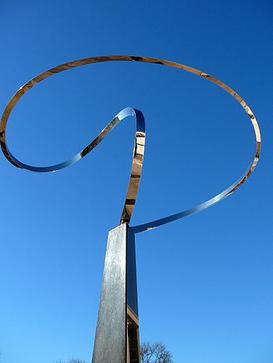
Infinity is an abstract sculpture designed by José de Rivera and created by Roy Gussow. It is located at the south entrance of the National Museum of American History, at Madison Drive and 12th Street, Northwest, Washington, D.C.
Sight 23: The Mall
The National Mall is a landscaped park near the downtown area of Washington, D.C., the capital city of the United States. It contains and borders a number of museums of the Smithsonian Institution, art galleries, cultural institutions, and various memorials, sculptures, and statues. It is administered by the National Park Service (NPS) of the United States Department of the Interior as part of the National Mall and Memorial Parks unit of the National Park System. The park receives approximately 24 million visitors each year. Designed by Pierre L'Enfant, the "Grand Avenue" or Mall was to be a democratic and egalitarian space—unlike palace gardens, such as those at Versailles in France, that were paid for by the people but reserved for the use of a privileged few.
Sight 24: National Museum of Natural History
The National Museum of Natural History (NMNH) is a natural history museum administered by the Smithsonian Institution, located on the National Mall in Washington, D.C., United States. It has free admission and is open 364 days a year. With 4.4 million visitors in 2023, it was the third most-visited museum in the United States.
Wikipedia: National Museum of Natural History (EN), Website, Facebook
Sight 25: Benjamin Franklin Statue
The outdoor statue of Benjamin Franklin in Washington, D.C., is located near the intersection of 12th Street and Pennsylvania Avenue, in front of the Old Post Office. The statue was a gift from Stilson Hutchins, founder of The Washington Post, who wanted to display his and the newspaper's stature in the city. The designer, Ernst Plassmann, and sculptor, Jacques Jouvenal, were both German-American artists. The architect of the memorial was J. F. Manning.
Wikipedia: Statue of Benjamin Franklin (Washington, D.C.) (EN)
Sight 26: Bearing Witness
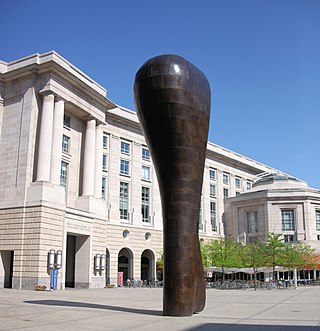
Bearing Witness is an outdoor 1997 sculpture by Martin Puryear, installed outside the Ronald Reagan Building and International Trade Center in Washington, D.C., in the United States. Twenty plus years after its construction the sculpture follows the characteristic style of Puryear and remains standing with minimal maintenance twenty plus years after its construction. The meaning of the sculpture is left up to interpretation, although many observers read into the inspirations Puryear may have had when designing the work.
Sight 27: Brigadier General Count Casimir Pulaski
General Casimir Pulaski is a bronze equestrian statue of Casimir Pulaski, a military man born in the Polish–Lithuanian Commonwealth. He joined the military at a young age, fighting for removal of the king, who was backed by Russia. After his side lost the war, he fled to Paris, where he met Benjamin Franklin. Impressed by Pulaski, Franklin wrote a letter of recommendation to George Washington, suggesting he would be a helpful soldier during the American Revolutionary War. After arriving in the U.S., Pulaski eventually was promoted to Brigadier General and commanded a cavalry unit, the Pulaski's Legion. He died in 1779 due to injuries sustained in battle.
Wikipedia: General Casimir Pulaski (statue) (EN), Heritage Website
Sight 28: General John J. Pershing Statue
John J. Pershing General of the Armies, is a public artwork by American artist Robert White, located at the National World War I Memorial in Washington, D.C.. John J. Pershing General of the Armies was originally surveyed as part of the Smithsonian's Save Outdoor Sculpture! survey in 1994. The monument is a tribute to United States Army general John J. Pershing.
Sight 29: National World War I Memorial
The National World War I Memorial is a national memorial commemorating the service rendered by members of the United States Armed Forces in World War I. The 2015 National Defense Authorization Act authorized the World War I Centennial Commission to build the memorial in Pershing Park, located at 14th Street and Pennsylvania Avenue NW in Washington, D.C. The park, which has existed since 1981, also contains the John J. Pershing General of the Armies commemorative work. In January 2016, the design commission selected the submission "The Weight of Sacrifice", by a team consisting of Joseph Weishaar, Sabin Howard, Phoebe Lickwar, and GWWO Architects, as the winning design, which was completed in September 2024.
Wikipedia: National World War I Memorial (Washington, D.C.) (EN), Website
Sight 30: Jacqueline Kennedy Garden
The Jacqueline Kennedy Garden is located at the White House south of the East Colonnade. The garden balances the Rose Garden on the west side of the White House.
Sight 31: Alexander Hamilton Statue
A bronze statue of Alexander Hamilton by James Earle Fraser, dedicated on May 17, 1923, is found on the south patio of the U.S. Treasury Building in Washington, D.C.
Wikipedia: Statue of Alexander Hamilton (Washington, D.C.) (EN)
Sight 32: General William T. Sherman Monument
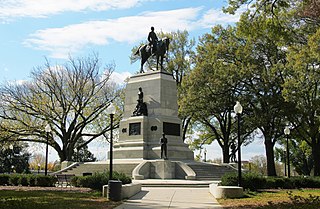
The General William Tecumseh Sherman Monument is an equestrian statue of American Civil War Major General William Tecumseh Sherman located in Sherman Plaza, which is part of President's Park in Washington, D.C., in the United States. The selection of an artist in 1896 to design the monument was highly controversial. During the monument's design phase, artist Carl Rohl-Smith died, and his memorial was finished by a number of other sculptors. The Sherman statue was unveiled in 1903. It is a contributing property to the Civil War Monuments in Washington, D.C. and to the President's Park South, both of which are historic sites listed on the National Register of Historic Places.
Wikipedia: General William Tecumseh Sherman Monument (EN), Heritage Website
Sight 33: The Ellipse
The Ellipse, sometimes referred to as President's Park South, is a 52-acre (21 ha) park south of the White House fence and north of Constitution Avenue and the National Mall in Washington, D.C., US. The Ellipse is also the name of the five-furlong (1.0 km) circumference street within the park. The entire park, which features monuments, is open to the public and is part of President's Park. The Ellipse is the location for many annual events.
Sight 34: First Division Monument
The First Division Monument is located in President's Park, south of State Place Northwest, between 17th Street Northwest and West Executive Avenue Northwest in Washington, DC, United States. The Monument commemorates those who died while serving in the 1st Infantry Division of the U.S. Army of World War I and subsequent wars.
Sight 35: Renwick Gallery
The Renwick Gallery is a branch of the Smithsonian American Art Museum located in Washington, D.C. that displays American craft and decorative arts from the 19th to 21st century. The gallery is housed in a National Historic Landmark building that was opened in 1859 on Pennsylvania Avenue and originally housed the Corcoran Gallery of Art. When it was built in 1859, it was called "the American Louvre", and is now named for its architect James Renwick Jr.
Sight 36: Major General Rochambeau
Major General Comte Jean de Rochambeau is a bronze statue honoring Jean-Baptiste Donatien de Vimeur, comte de Rochambeau, a French nobleman and general who played a major role in helping the Thirteen Colonies win independence during the American Revolutionary War. Rochambeau joined the French military as a teenager, participating in the War of Austrian Succession, after which he was promoted to colonel, and the Seven Years' War. During the war in America, Louis XVI asked Rochambeau to lead a force of 5,500 French soldiers to assist the fight against the Kingdom of Great Britain. He and George Washington later worked together in the successful siege of Yorktown. He led the Army of the North during the French Revolutionary Wars, but was arrested and almost executed during the Reign of Terror. His military rank was restored by Napoleon and Rochambeau died a few years later in 1807.
Sight 37: Brigadier General Kosciuszko
Brigadier General Thaddeus Kościuszko is a bronze statue honoring Polish military figure and engineer Tadeusz Kościuszko. The sculpture was dedicated in 1910, the third of four statues in Lafayette Square, Washington, D.C., to honor foreign-born heroes of the American Revolutionary War. Born in the Polish–Lithuanian Commonwealth in 1746, Kościuszko later received education at a Jesuit school before attending the Corps of Cadets in Warsaw. He later traveled to France where he studied in military academy libraries and adopted views of human liberty during the Age of Enlightenment. He moved to the Thirteen Colonies in 1776, where the war with the Kingdom of Great Britain had already begun. Kościuszko served as an engineer in the Continental Army, earning the praise of his superiors, including General George Washington.
Wikipedia: Statue of Tadeusz Kościuszko (Washington, D.C.) (EN)
Sight 38: Major General Lafayette
Major General Marquis Gilbert de Lafayette is a statue in the southeast corner of Lafayette Square, in Washington, D.C., near the intersection of Pennsylvania Avenue and Madison Place, across the street from the White House. The statue was erected in 1891 to honor Gilbert du Motier, Marquis de Lafayette, and his contributions in the American Revolutionary War. The square, originally part of the President's Park, was named in honor of the Marquis in 1824 during a visit he made to the U.S. The statuary was made by Alexandre Falguière and Antonin Mercié, and the architect who designed the marble pedestal was Paul Pujol. The monument comprises a bronze statue of the Marquis de Lafayette about 11 ft (3.4 m) high, standing on a French marble pedestal with four faces decorated with classical mouldings, accompanied by seven additional bronze statues, all larger than life size.
Wikipedia: Statue of the Marquis de Lafayette (Washington, D.C.) (EN)
Sight 39: Major General James B. McPherson
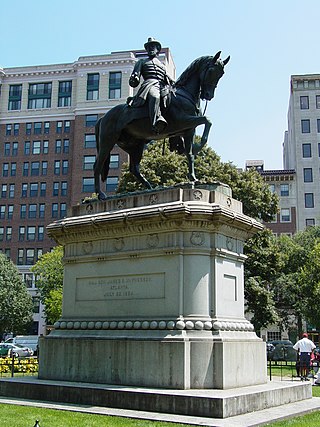
Major General James B. McPherson is a public artwork by American artist Louis Rebisso, located at McPherson Square in Washington, D.C., United States. Major General James B. McPherson was originally surveyed as part of the Smithsonian's Save Outdoor Sculpture! survey in 1993. The monument is a bronze equestrian statue of Civil War hero James B. McPherson. The statue is a contributing monument to the Civil War Monuments in Washington, DC, of the National Register of Historic Places.
Sight 40: McPherson Square
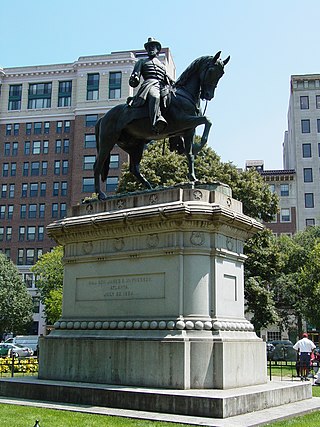
McPherson Square is a public square in downtown Washington, D.C. It is bound by K Street Northwest to the north, Vermont Avenue NW on the East, I Street NW on the south, and 15th Street NW on the West; it is one block northeast of Lafayette Park. It is the sister square of Farragut Square two blocks west. It is served by the McPherson Square station of the Washington Metro.
Sight 41: Franklin Square
Franklin Square, or Franklin Park, is a square in downtown Washington, D.C. Purportedly named after Benjamin Franklin, it is bounded by K Street NW to the north, 13th Street NW on the east, I Street NW on the south, and 14th Street NW on the west. It is served by the McPherson Square station of the Washington Metro, which is located just southwest of the park.
Sight 42: Commercial National Bank
Commercial National Bank is an historic structure located in Downtown Washington, D.C. It was listed on the National Register of Historic Places in 1991.
Sight 43: Old Greyhound Bus Terminal
The Old Greyhound Terminal was a bus terminal serving Greyhound Lines located at 1100 New York Avenue NW in Northwest, Washington, D.C. in the United States operating from 1940 to the 1980s. It was used extensively during World War II to transport servicemen, and played a minor role in the Civil Rights Movement. It was saved through the intervention of preservationists. Most of the building was incorporated in the new 1100 New York Avenue high-rise office building when it was built in 1991.
Sight 44: Edmund Burke Statue
Edmund Burke is a bronze, full-length statue of British statesman, author, orator, political theorist, and philosopher Edmund Burke by British artist James Havard Thomas. The original statue is in Bristol, England, with a second cast in Washington, D.C. The statue in Washington, D.C., stands in Burke Park, at the intersection of 11th Street, L Street, and Massachusetts Avenue NW, on the southern border of the Shaw neighborhood. The statue was a gift from the Charles Wakefield, 1st Viscount Wakefield, on behalf of the Sulgrave Institution, an organization that wanted to celebrate United Kingdom–United States relations. One way the group did this was by exchanging statues and busts between the two countries.
Sight 45: Samuel Gompers Memorial Park
The Samuel Gompers Memorial is a bronze collection of statues in Washington, D.C., sited on a triangular park at the intersection of 11th Street, Massachusetts Avenue, and N Street NW. Samuel Gompers was an English-born American who grew up working in cigar factories, where he witnessed the long hours and dangerous conditions people experienced in factory jobs. He helped with growing the Cigar Makers' International Union, and a few years later, founded the American Federation of Labor (AFL). The number of members rose from 50,000 to 3,000,000 during his time as president of the union. He was not only successful in expanding the power of the labor movement, but also increased its prestige.
Sight 46: Carnegie Library of Washington D.C
The Carnegie Library of Washington D.C., also known as Central Public Library, now known as the Apple Carnegie Library, is situated in Mount Vernon Square, Washington, D.C.
Sight 47: Rigo Walled Park
Rigo Walled Park is a neighborhood-named urban open space located on National Park Service property south of New York Avenue at L Street, NW in the Mount Vernon Square neighborhood of Washington, D.C. It is administered as part of the National Mall and Memorial Parks.
Sight 48: Louis Daguerre Statue
The Daguerre Memorial is a bronze and granite sculpture by Jonathan Scott Hartley in Washington, D.C. It was erected in memory of Louis Daguerre.
Sight 49: Homeless Jesus
Homeless Jesus, also known as Jesus the Homeless, is a bronze sculpture by Timothy Schmalz depicting Jesus as a homeless person, sleeping on a park bench. The original sculpture was installed in 2013 at Regis College, a theological college federated with the University of Toronto. Other copies of the statue were installed in several other locations beginning in 2014. As of 2017, over 50 copies were created and placed around the world.
Sight 50: Ford's Theatre National Historic Site
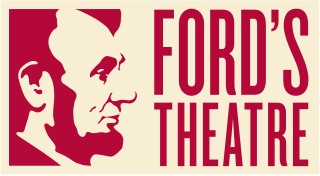
Ford's Theatre is a theater located in Washington, D.C., which opened in 1863. The theater is best known for being the site of the assassination of Abraham Lincoln. On the night of April 14, 1865, John Wilkes Booth entered the theater box where Lincoln was watching a performance of Tom Taylor's play Our American Cousin, slipped the single-shot, 5.87-inch derringer from his pocket and fired at Lincoln's head. After being shot, the fatally wounded Lincoln was carried across the street to the nearby Petersen House, where he died the next morning.
Share
How likely are you to recommend us?
Disclaimer Please be aware of your surroundings and do not enter private property. We are not liable for any damages that occur during the tours.
GPX-Download For navigation apps and GPS devices you can download the tour as a GPX file.

